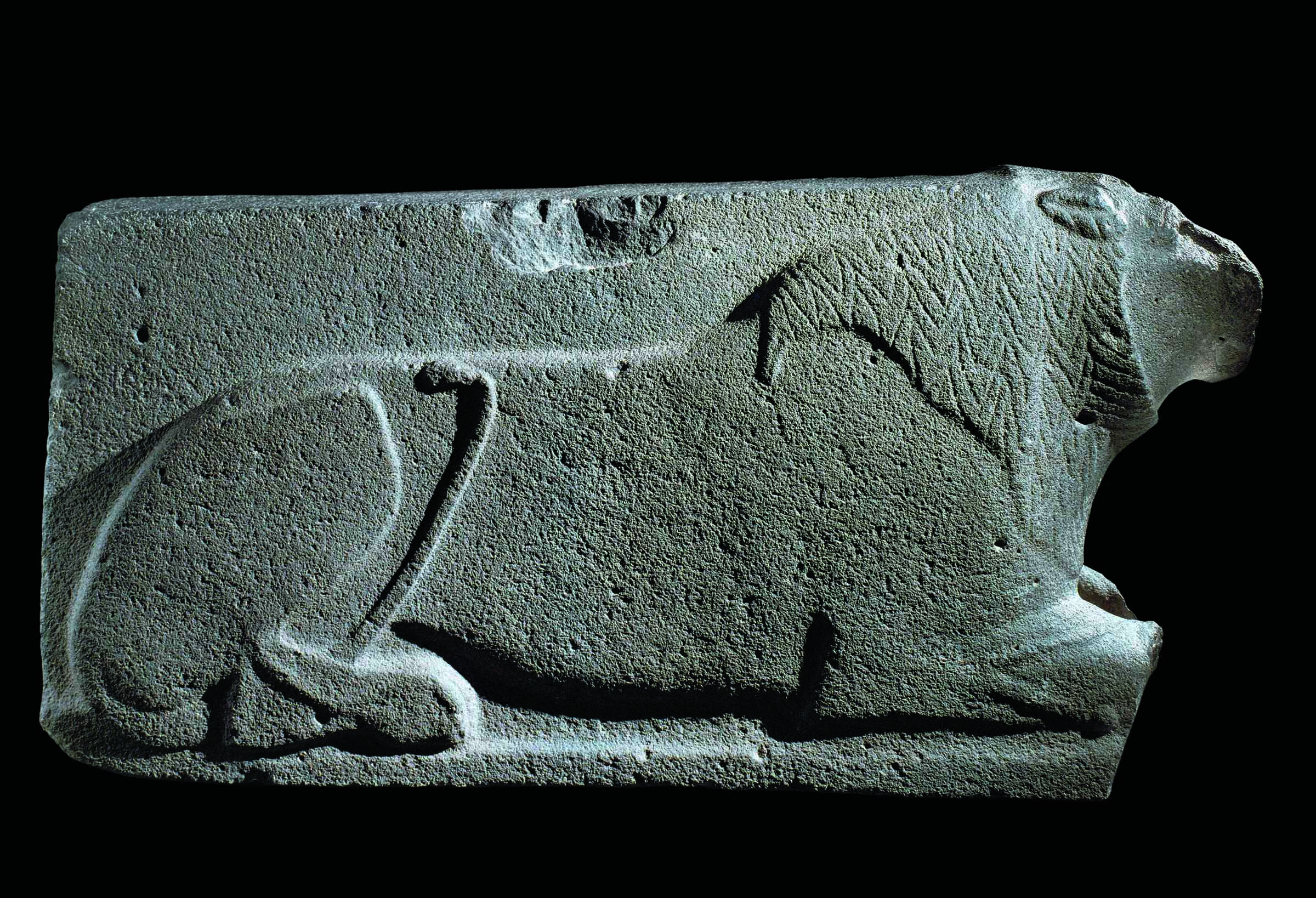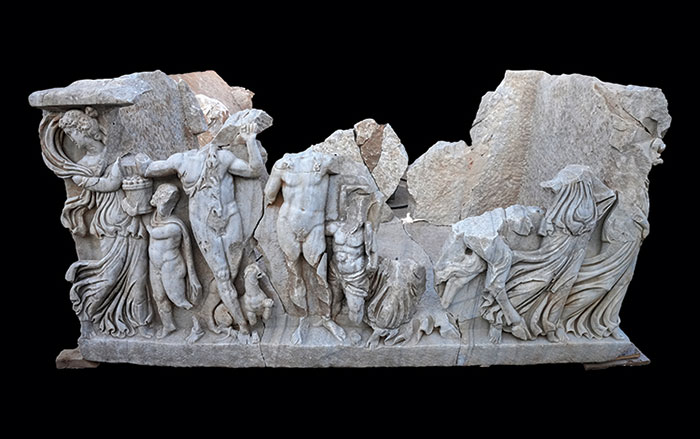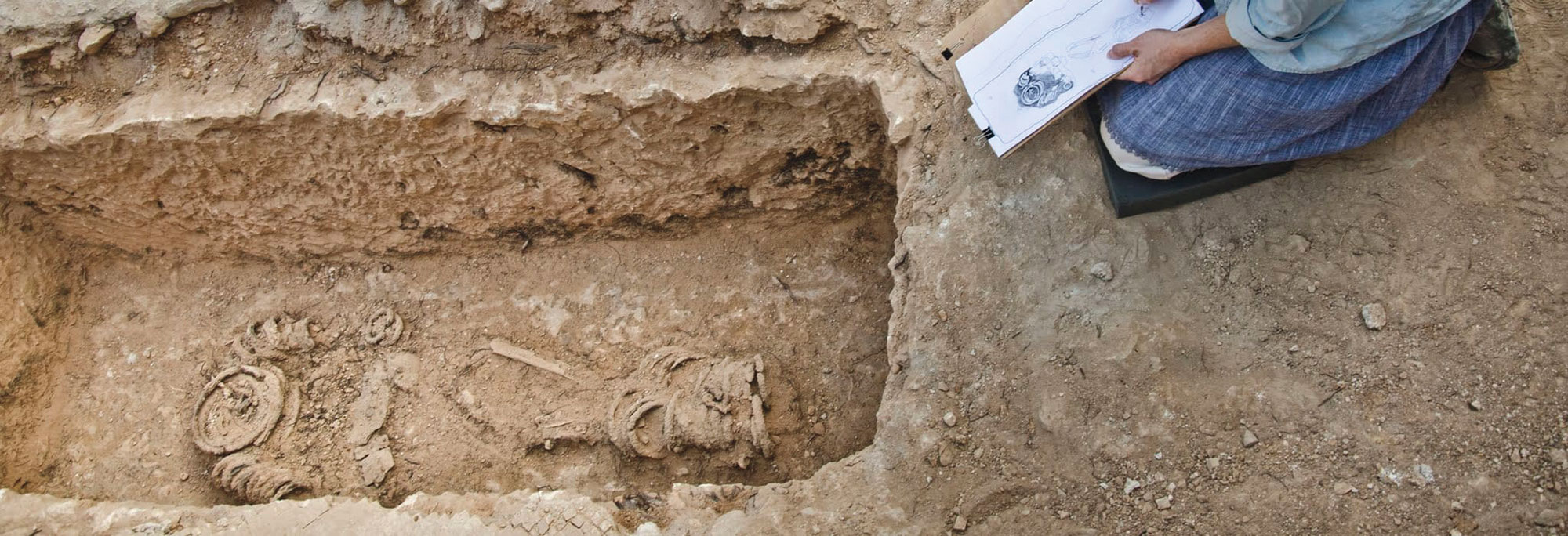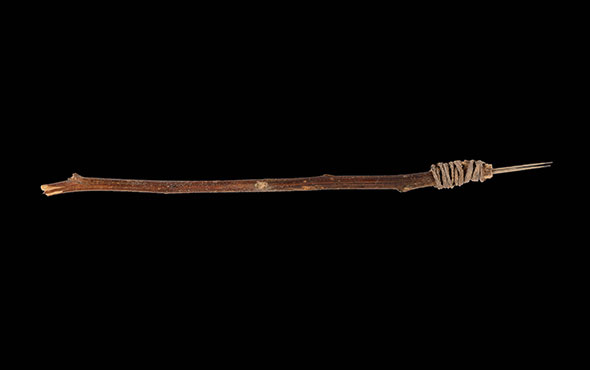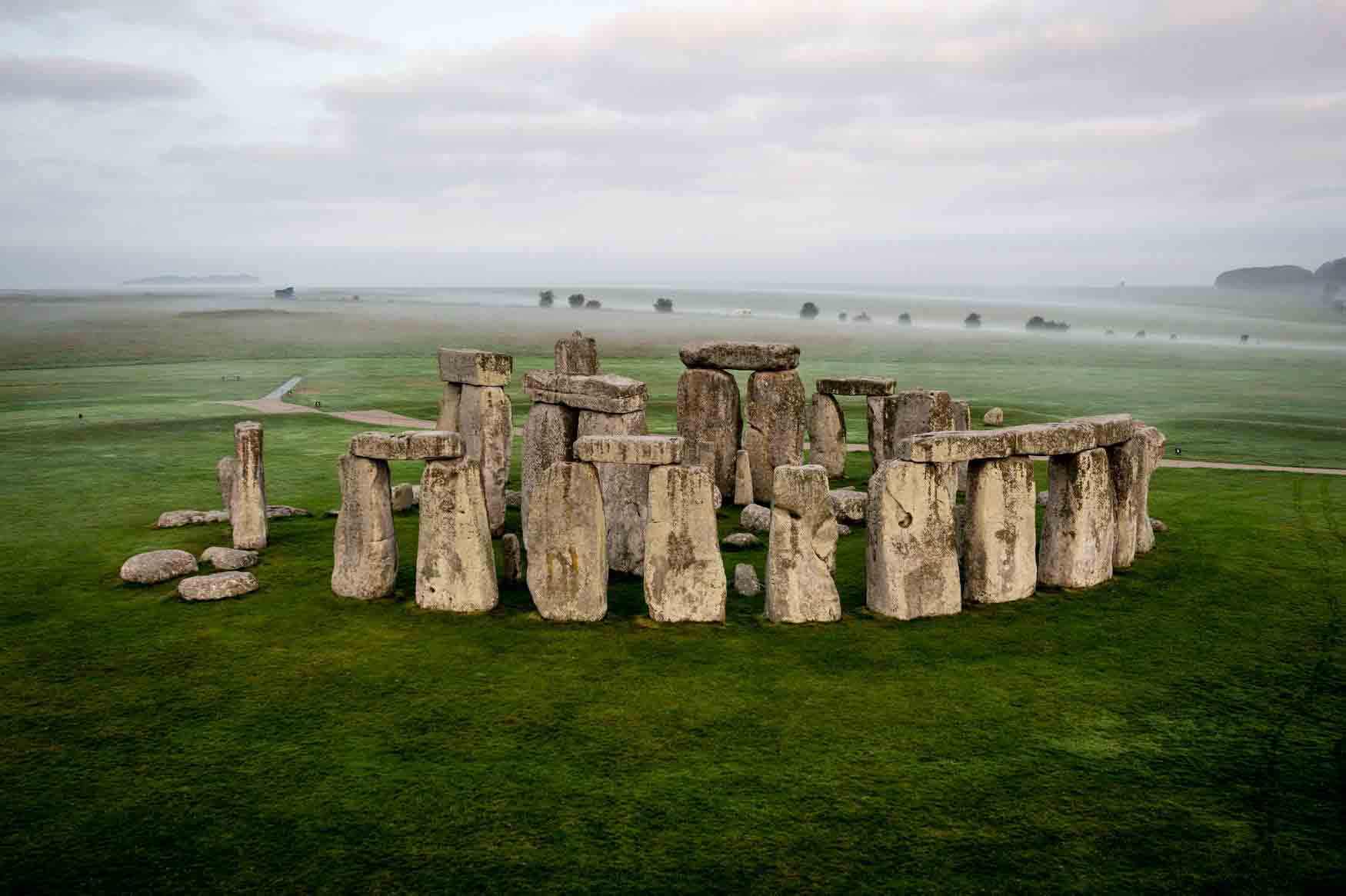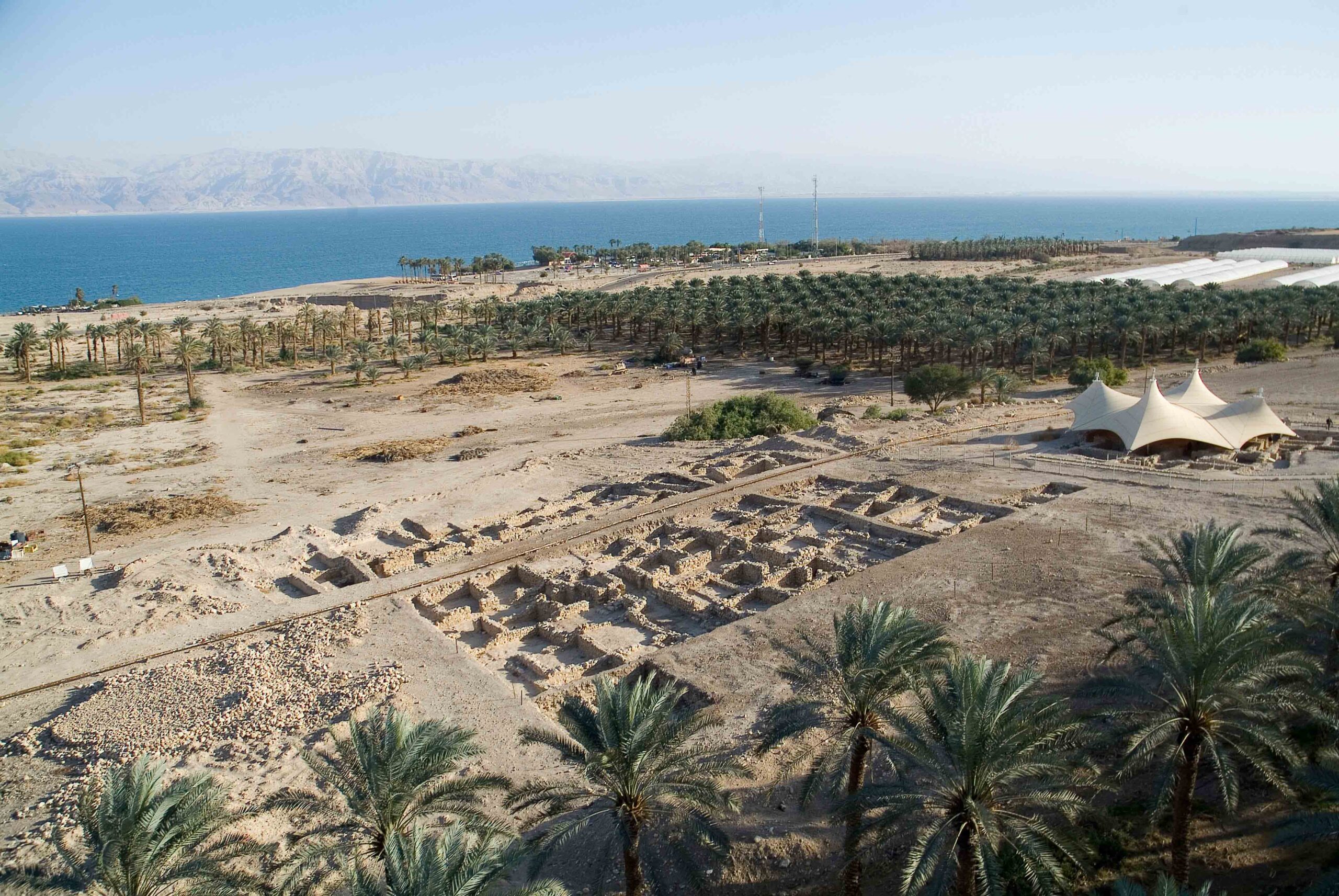
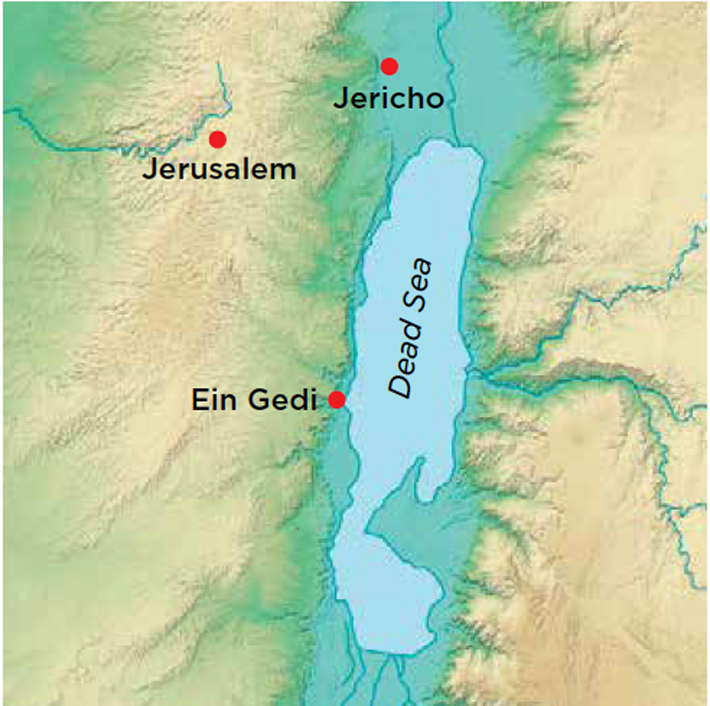
The Dead Sea includes the lowest point on Earth, at more than 1,400 feet below sea level, and lies in a long and narrow desert valley that runs through Israel, Jordan, and the West Bank. The sea itself is nearly 1,000 feet deep and covers more than 200 square miles, but its water is too salty to support any life beyond microscopic bacteria. Called a “sea” in multiple languages, including Hebrew and Arabic, this body of water is actually an inland lake, fed mainly by the Jordan River at its northern end. Green oases of palm trees and freshwater springs dot the land around the Dead Sea, but the terrain is overwhelmingly barren and rocky, with mountains rising along both the eastern and western shores.
Despite the harsh landscape, people have lived alongside the Dead Sea for millennia, drawn in part by the valuable minerals that can be harvested from its water and mud, as well as the maritime transport routes and trade links it provides. Located just 20 miles from Jerusalem, the Dead Sea has played an important political and economic role in the Near East since at least the seventh century B.C., when boats loaded with salt, bitumen, and crops likely first plied its waters, their cargo destined for Jerusalem, Jericho, and Mediterranean ports. “The Dead Sea gradually becomes this place where people see that they can make a lot of money,” says King’s College London archaeologist Joan Taylor. “The economic resources, from salt to asphalt to what was grown around it in the oases, are incredibly significant. It’s one of the most extraordinary places in the world.”
One place where archaeologists have unearthed abundant evidence of people’s long relationship with this unique body of water is Ein Gedi, the region’s largest oasis, which covers more than 250 acres on the lake’s western shore. Here, a team led by archaeologists Orit Peleg-Barkat of the Hebrew University of Jerusalem and Gideon Hadas of Ben Gurion University’s Dead Sea-Arava Science Center is uncovering the remains of a Jewish village that thrived for more than a thousand years. As a direct consequence of the rule of a long series of powers, including the Assyrian, Babylonian, Persian, and Roman Empires, all of whom were heavily invested in the village’s economy, Ein Gedi’s inhabitants reaped the benefits of their unusual environment—a lush oasis with easy access to the Dead Sea’s mineral riches. “This may be the most beautiful place in the world,” says Hadas, “but it all has to do with the environment and resources. That’s what brings people here.”
The 2019 excavation season, which concluded a 16-year-long investigation of dwellings and other structures from the Second Temple and Byzantine periods, built on earlier excavations going back to the 1960s. Those previous digs had exposed remains that date back more than 6,000 years, including an ancient temple, dozens of houses, Jewish ritual baths, a Byzantine synagogue, and agricultural terraces, but also left many questions. During the most recent excavations, the team sought to understand more about the village’s economy and trade connections, as well as how it weathered the chaotic last years of the ancient province of Judea and its eventual incorporation into the Roman Empire. Hadas and his colleagues are showing that evidence of the lives of Ein Gedi’s ancient villagers are key to understanding how the Dead Sea enriched, supported, and connected those able to prosper on its inhospitable shores.

Today, the ancient village of Ein Gedi lies on the property of an Israeli kibbutz, or communal agricultural settlement, that produces dates and bottles mineral water collected from four large natural springs. These springs first attracted people more than six millennia ago, when a Copper Age farming people known as the Ghassulians, who inhabited the southern Levant between 4400 and 3500 B.C., built a temple here. Perched high on a natural terrace above one of Ein Gedi’s springs, the temple commands a sweeping view of the Dead Sea. In the 4,000-square-foot religious compound, consisting of four stone and mudbrick buildings, archaeologists have found a circular stone structure with a basin connected to a drainage channel. This, along with the discovery of several rocks just outside the complex with holes bored in them, may be evidence of Ghassulian rituals centered on water. After the Ghassulians left in the fourth millennium B.C., their entire culture seems to have disappeared from the region for reasons that remain unknown. The oasis, along with most of the area around the Dead Sea, remained empty of permanent settlers for the next 3,000 years. “We don’t know exactly why no one lived around here in that period,” says Hadas. “We have no remains to tell us anything other than that it was empty.”
In the early seventh century B.C. a group of newcomers built a village of stone and mudbrick houses and workshops on the hillside below the remains of the Ghassulian temple. During the 1960s, Israeli archaeologist Benjamin Mazar of Hebrew University found types of pottery—and identified Hebrew names on personal seal stamps—at the site, indicating that Ein Gedi was an Israelite village. This was the beginning of more than 1,000 years of nearly uninterrupted Jewish life there.
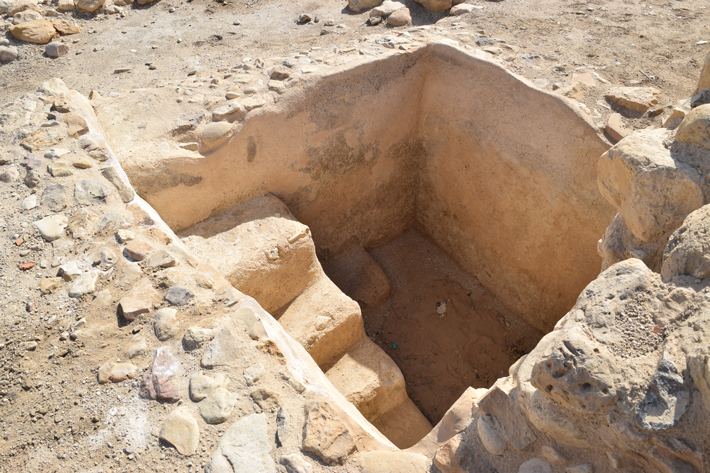
The village was one of several new settlements built east of Jerusalem, then the capital of the Jewish kingdom of Judea and a loyal vassal state of the Assyrian Empire. Settling at Ein Gedi was part of a trend of Judean expansion driven by the need to cultivate more land and ensure the Assyrian rulers access to the Dead Sea and its minerals. The words “for the king” stamped onto many vessels found at the site make it clear that the central government in Jerusalem controlled the economy, which relied on producing dates, grain, and salt.
This theme of settlement and development would continue through much of Ein Gedi’s history. “Whenever the regime in charge is stable, we see that Ein Gedi grows,” Hadas says. “Building agricultural terraces, establishing workshops, and finding markets for goods requires investment and connections.” Like many areas in Judea, though, Ein Gedi’s remains speak to the devastating Babylonian invasion at the end of the seventh century B.C., when King Nebuchadnezzar advanced from modern-day Iraq and laid siege to Jerusalem and its surrounding areas, adding them to his growing empire. Archaeologists have found a layer of ash from this period at Ein Gedi, evidence that it was at least partially destroyed. Because only part of the settlement has been excavated, though, it isn’t clear how thorough the destruction was, or even if Ein Gedi was completely abandoned at this time.
In the sixth century B.C., the Achaemenid Persians, who were based in Persepolis, in what is now Iran, rose to power in the region and conquered much of the former Babylonian Empire, including Judea. Once again, Ein Gedi flourished. Mazar and his team found numerous Achaemenid-era seal stamps on jar handles. It’s unclear if the descendants of the original inhabitants reoccupied the settlement, or if it was newcomers who recognized its potential. “We can’t say exactly when people returned to Ein Gedi, or if it was the same families that were here before,” Hadas says. “But Judea was a relatively small province, and people saw this as a place they could make a living.” The villagers appear to have led prosperous lives filled with expensive imported objects including pottery from the Galilee, Jordan, and Greece, and glass pendants carved in the shape of human faces from Phoenicia. There is evidence of the use of Egyptian cosmetics, such as kohl tubes and bronze-trimmed mirrors.
Ein Gedi’s residents, however, weren’t content to stay on the shores to make their living from the Dead Sea’s bounty. Radiocarbon dating of a one-armed anchor Hadas found sticking out of the mud on the lakeshore confirmed that it dates from between the eighth and sixth centuries B.C., far older than the other mainly Roman- and Byzantine-era anchors that have been discovered at or near the site over the last two decades. Offering the oldest archaeological evidence of sailing on the Dead Sea, the anchor likely belonged to a simple reed watercraft of the type that were used at the time elsewhere in the region, including on the Tigris and Euphrates Rivers, says Asaf Oron of the University of Haifa. He explains this anchor may be proof that, during the sixth century B.C., local people such as the villagers of Ein Gedi first sailed the lake’s waters to collect bitumen, which seeps up from the bottom of the Dead Sea and had many uses in antiquity. The mineral was employed across the region as an additive to cement, as waterproof coating for baskets, as paint for decorating vessels, and as an embalming agent in mummification. Archaeologists have found bitumen, sometimes stored in jars, dating from nearly all the periods of Ein Gedi’s occupation.

Boats are largely absent on the Dead Sea today, aside from a few tourist and scientific vessels, in part because the area is a military zone and forms part of the international border between Israel and Jordan. But beginning in the sixth century B.C.—or perhaps earlier—and lasting through the nineteenth century, boats were a common feature on the Dead Sea. In fact, the Madaba Mosaic Map, which was discovered in a church in Jordan and dates to the sixth century A.D., depicts two ships loaded with cargo afloat on the lake.
Boats would clearly have been an efficient way to move people and goods across the water or along the shores in areas where overland travel could be dangerous or even impossible given the mountainous terrain rife with canyons, changing water levels, and flash floods. Archaeologists have identified at least eight anchorages around the Dead Sea, many of them located in or near the oases that dot the shores, or near overland trade routes. In periods of political stability going back to the seventh century B.C., this network of anchorages helped transport both utilitarian and luxury items.

Hadas’ recent excavations at Ein Gedi show just how much the community relied on the Dead Sea for both trade and transportation. Almost every excavated house in Ein Gedi contains a slab of red sandstone quarried from the eastern side of the lake, which, says Hadas, may have been used as a cutting board or for sharpening tools. Basalt grinding stones found at the site came from the mountainous region of Moab, also across the water, as did many pieces of painted ceramics. “Of course this came by boat,” Hadas says. “Why would they put it on a camel and walk all the way around when they can just sail across?” Three stone anchors found on Ein Gedi’s shore indicate that larger ships, not just reed boats, were also in use from at least the third or second century B.C.
The Dead Sea’s established trade routes and abundant natural resources spurred the Hasmonean Dynasty, a Jewish priestly family that ruled from Jerusalem from around 154 to 37 B.C., to further develop the area. In the first century B.C., the Hasmoneans made Ein Gedi a district capital of the province of Judea. Excavations at the site have shown that the villagers expanded farther down the hill at this time, adding more agricultural land and building additional irrigation systems in order to cultivate dates in particular. Archaeologists have also found hints that the Hasmoneans built royal dwellings in Ein Gedi. Several Doric capitals typical of this time period, along with stones carved with rosettes and grape clusters, were reused in the pavement of a later Roman bathhouse just south of the village.
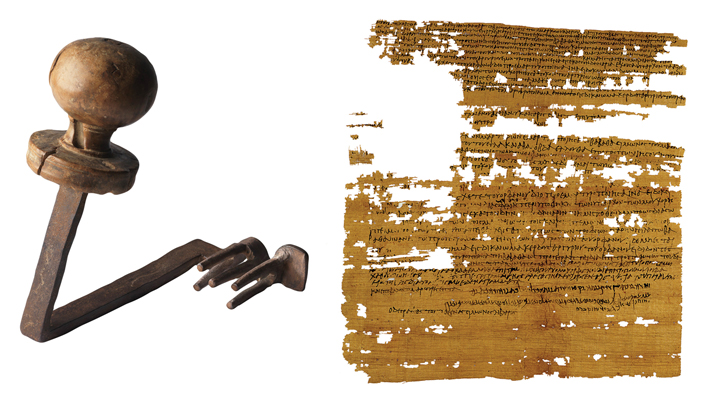
The Romans took control of the area in the mid-first century B.C., after the defeat of the Hasmoneans by Mark Antony and Herod, and over the next few centuries faced numerous confrontations with local Jewish leaders, including Simeon bar Kokhba, who led a widespread uprising that included residents of Ein Gedi. The Bar Kokhba Revolt ultimately failed in A.D. 135, but, by this time, Ein Gedi was already referred to as a “village of the lord Caesar” in papyrus documents left behind in the so-called Cave of Letters, where dozens of people from the village hid from the fighting between Jewish rebels loyal to bar Kokhba and the Roman military. Some of the papyri Israeli archaeologists found in the cave in the 1960s belonged to a woman named Babata, daughter of Simeon. From documents related to her marriages, divorces, and property ownership, it’s clear that she and her family owned land in Ein Gedi and areas across the water, which had come under Roman control in the second century A.D.
Once again, the region’s central government controlled Ein Gedi’s economy, and once again its residents profited. But a second-century A.D. layer of ash at the site from burning buildings, along with personal items, house keys, and important family documents belonging to the residents of Ein Gedi found in the Cave of Letters, indicate that most of the people who hid there likely did not return to their homes. Nonetheless, Jews continued to live in Ein Gedi under Roman rule, cultivating its fields, and attaining success enough to establish a synagogue in the third century A.D. “You would expect Ein Gedi to go on, because it was of such enormous interest to Rome,” says King’s College London’s Joan Taylor. “It was in everyone’s interest for it to continue.”
By the fourth century A.D., the village had expanded farther into the area where Hadas and Peleg-Barkat recently completed their excavations. In the 1970s, the archaeologists who discovered the village’s synagogue determined that it had been extensively renovated in the fifth century A.D., including the addition of a new floor mosaic decorated with geometric designs and birds, as well as with an Aramaic text forbidding community members from revealing “the secret of Ein Gedi.” Hadas can’t say for certain what that secret may have been, although many have surmised that the words refer to guarding the trade secrets of the production of balsam, which was of high value in the ancient world for its aromatic and medicinal properties.
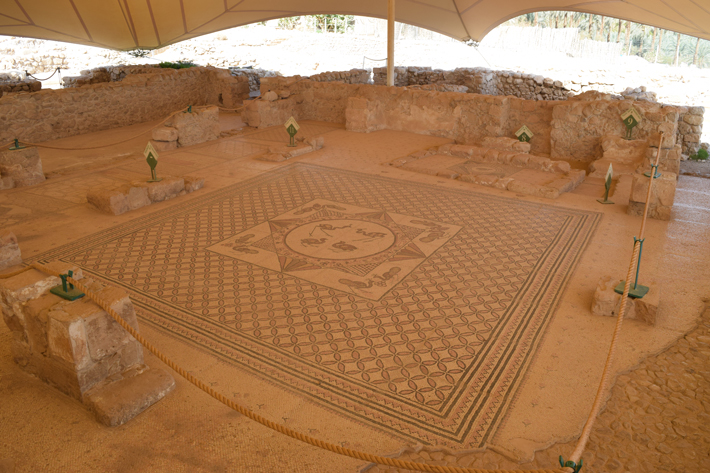
Only a century or so after the synagogue was renovated, the settlement at Ein Gedi came to an end. Hadas has documented evidence of a late sixth- or early seventh-century A.D. fire that destroyed it in marks scarring many of the villages’ walls and mosaic floors. A hoard of copper coins he found under the floor of a house in 2018 signals that residents may have had to leave so quickly that they didn’t have time to retrieve the cache. Hadas and Peleg-Barkat are not sure why life ended at Ein Gedi, although the community’s destruction does coincide with a period of increasing instability in many parts of the Byzantine Empire, which now controlled the region. Other desert settlements also came to an end at this time.
Archaeologists at Ein Gedi have recovered some remains, including a flour mill and simple dwellings, from when the Egyptian Mamluks ruled the area in the thirteenth through fifteenth centuries. After this, the area again lay empty until a kibbutz was established there in the 1950s. To this day, the Dead Sea’s ample wealth remains vital to the economies of the countries that control it. Farmers still grow dates on the coveted oases along the lake’s shores, and Israeli and Jordanian chemical companies harvest salt, potassium, and other minerals from the Dead Sea, selling them, much as people did in the past, in markets near and far.



